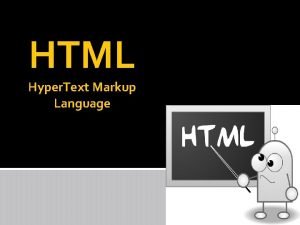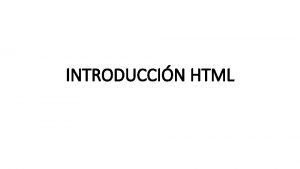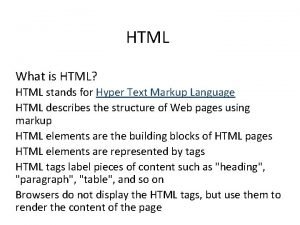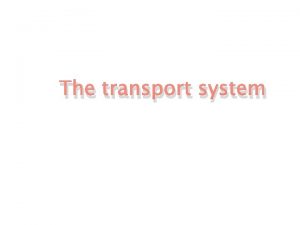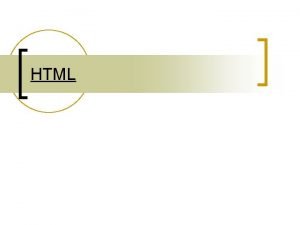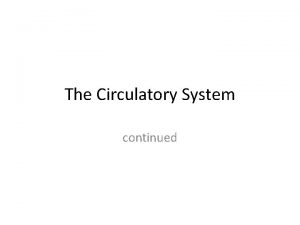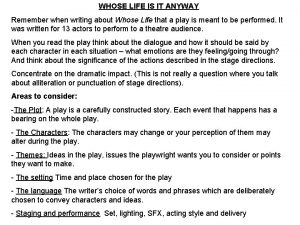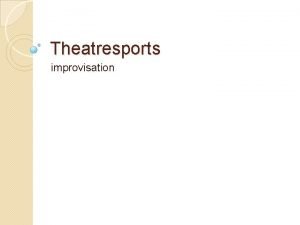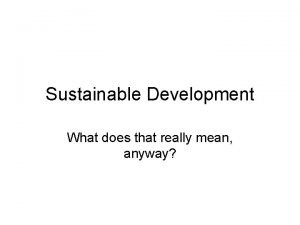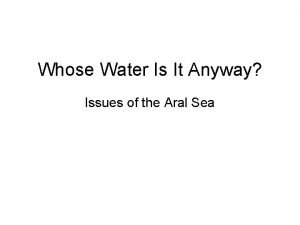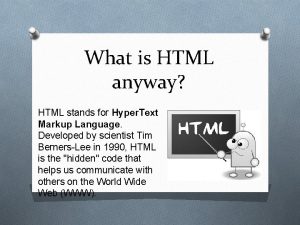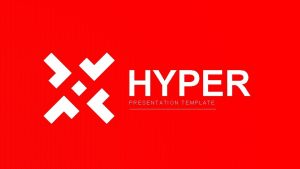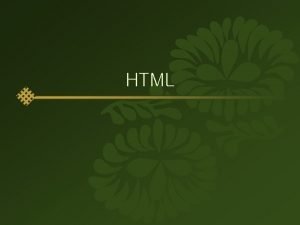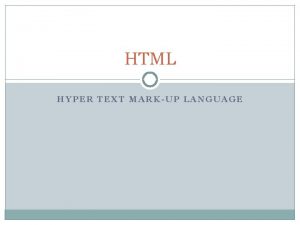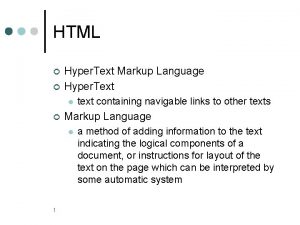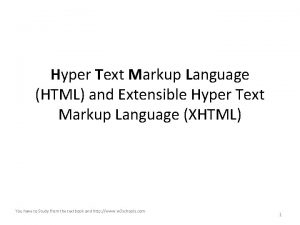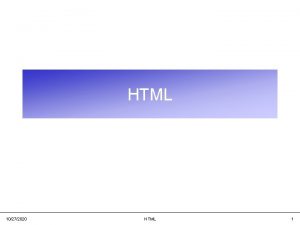What is HTML anyway HTML stands for Hyper











- Slides: 11

What is HTML anyway? HTML stands for Hyper. Text Markup Language. Developed by scientist Tim Berners-Lee in 1990, HTML is the "hidden" code that helps us communicate with others on the World Wide Web (WWW).

You can easily look at the HTML code on any document: O Go online O Open Firefox O Enter the address to your favorite site O Go to View on the toolbar and then click on Source for Explorer or Tools for Firefox, Web Developer, Page Source. In a matter of seconds, you will see the hidden code of that page.

Basic Concepts: O HTML tags are always surrounded by angle brackets and look like < >. O The words/letters between these two angle brackets are called elements. O Example: <title>

Container and empty tags: O There are two kinds of tags: container and empty. O The container tag always wraps around text or graphics and comes in a set with an opening and a closing: <html> opening tag </html> closing tag O Notice the forward slash (/) on the closing tag. This tells the browser that the tag has ended. O On the other hand, the empty tag stands alone. Empty tags do not have to be wrapped around copy and do not require a closing.

Case Sensitive: O HTML is also not case sensitive. That means, you can use either lowercase or uppercase. <HTML> is the same as <html>. O For consistency, use either one or the other.

Document Structure: O All HTML documents are divided into two main parts: the head and the body. O Nesting Part of the web page structure is called nesting. Notice how the tag <title> is nested inside the <head> tag, while <head> and <body> are nested inside <html>.

Primary Tags: O To build any web page you will need four primary tags: • <html> • <head> • <title> • <body> O These are all container tags and must appear as pairs with a beginning and an ending.

<html>…</html> O Every HTML document begins and ends with the <html> tag. This tells the browser that the following document is an html file. Remember, tags tell the browsers how to display information.

<head>…</head> O The <head> tag contains the title of the document along with general information about the file, like the author, copyright, keywords and/or a description of what appears on the page.

<title>…</title> O Appears within the <head> tag and gives the title of the page. Try to make your titles descriptive, but not more than 20 words in length. The title appears at the very top of the browser page on the title bar.

<body>…</body> O The main content of your page is placed within the body tags: your text, images, links, tables and so on.
